Padua is at the center of a public art project that interweaves the city’s history with contemporary sculpture, with a tribute to Giotto by sculptor Gianfranco Meggiato. From October 2 to March 31, 2026, the Venetian city will host the widespread exhibition The Kiss of Judas, A Return to Plasticity. Gianfranco Meggiato: a tribute to Giotto, curated by Jon Wood and Nicola Galvan and promoted by the City of Padua with the Fundación de Arte y Cultura Gianfranco Meggiato.
For more than seven centuries, the city has guarded the Scrovegni Chapel, an absolute masterpiece of the 14th century and a turning point in the history of European art. It was in that place that Giotto gave body and volume back to painting, restoring the texture and weight of reality to the figures. Meggiato wants to translate Giotto’s lesson into a three-dimensional key and transform it into a reflection on the relationship between form, space and spirituality. The exhibition itinerary is articulated through fourteen monumental sculptures located at different points in the city. The central work, which gives the exhibition its title, is The Kiss of Judas, located in the path leading to the Scrovegni Chapel.
The artist was inspired by the scene frescoed by Giotto to construct his composition: eight dark figures surround a shining central figure, representing Christ, stretched upward in an upward spiral. On the left side of the sculpture appears Peter in the act of cutting off the ear of the High Priest’s servant, while in the center Judas embraces Christ and kisses him. On the right side three figures define the moment of the arrest.
“Gianfranco Meggiato,” comments the Culture Councillor of the City of Padua, Andrea Colasio, “has always been committed to restoring the public dimension to art, bringing it out of the Galleries and Museums by bringing it, with works and installations, to the most lived-in places in the city, the streets, the squares. He also chose Padua for the stimulating confrontation with Giotto, and for this he created a work, installed in the path leading to the Scrovegni Chapel, which is inspired by the very famous Kiss of Judas. It is an intelligent dialogue between contemporary art and the Urbs Picta. I thank him, because this important exhibition involves the whole city and not only the most central places.”
“The betrayal of Judas,” explains Gianfranco Meggiato, “is not only about the Gospel episode, but is symbolic of what we ourselves commit toward our deepest essence. My sculpture is meant to be an invitation to remember who we really are: spiritual beings in physical bodies. Only by accepting this awareness can we understand that material reality is nothing more than a thought made visible. For, conscious or not, we are all One.”
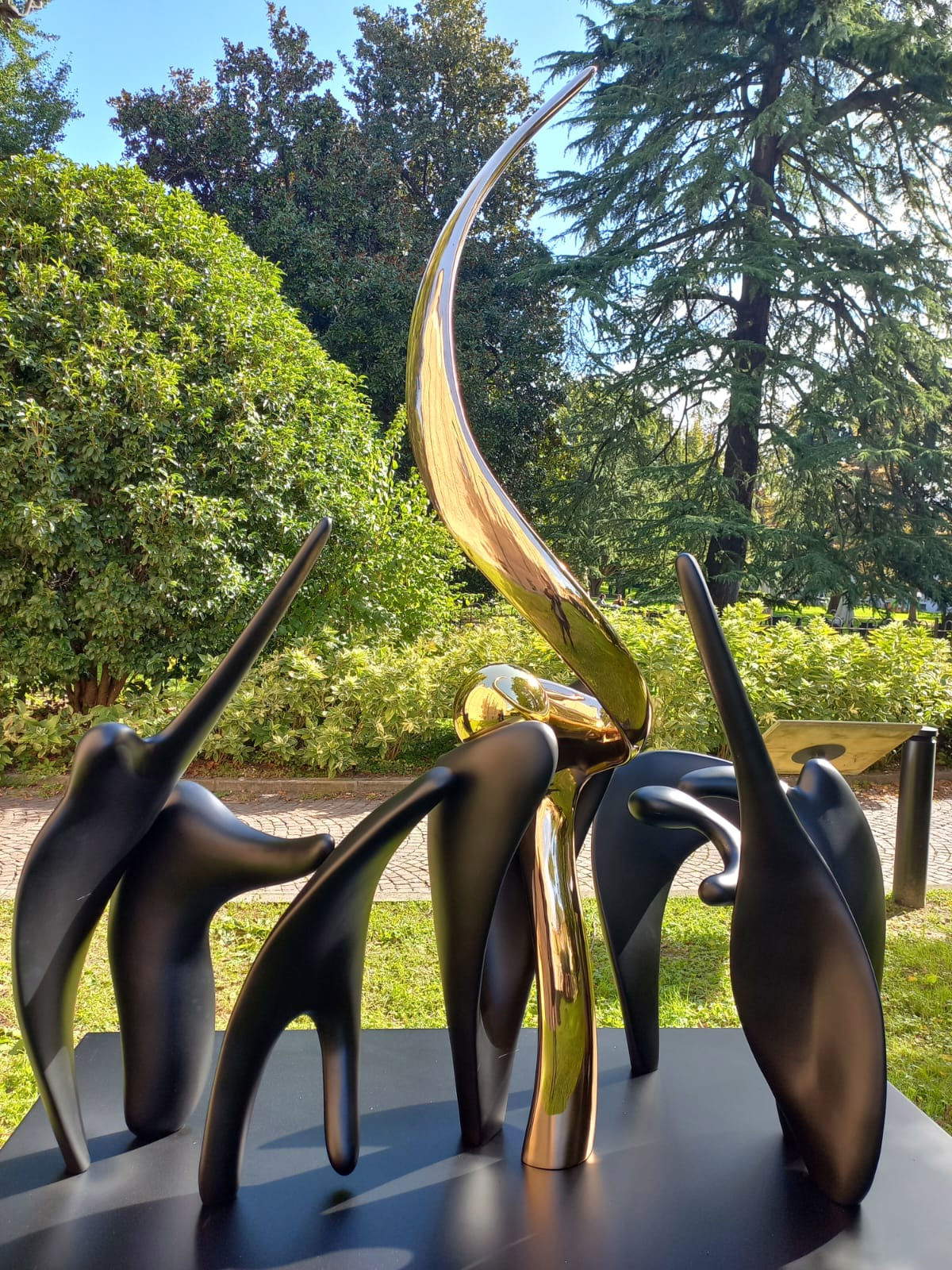
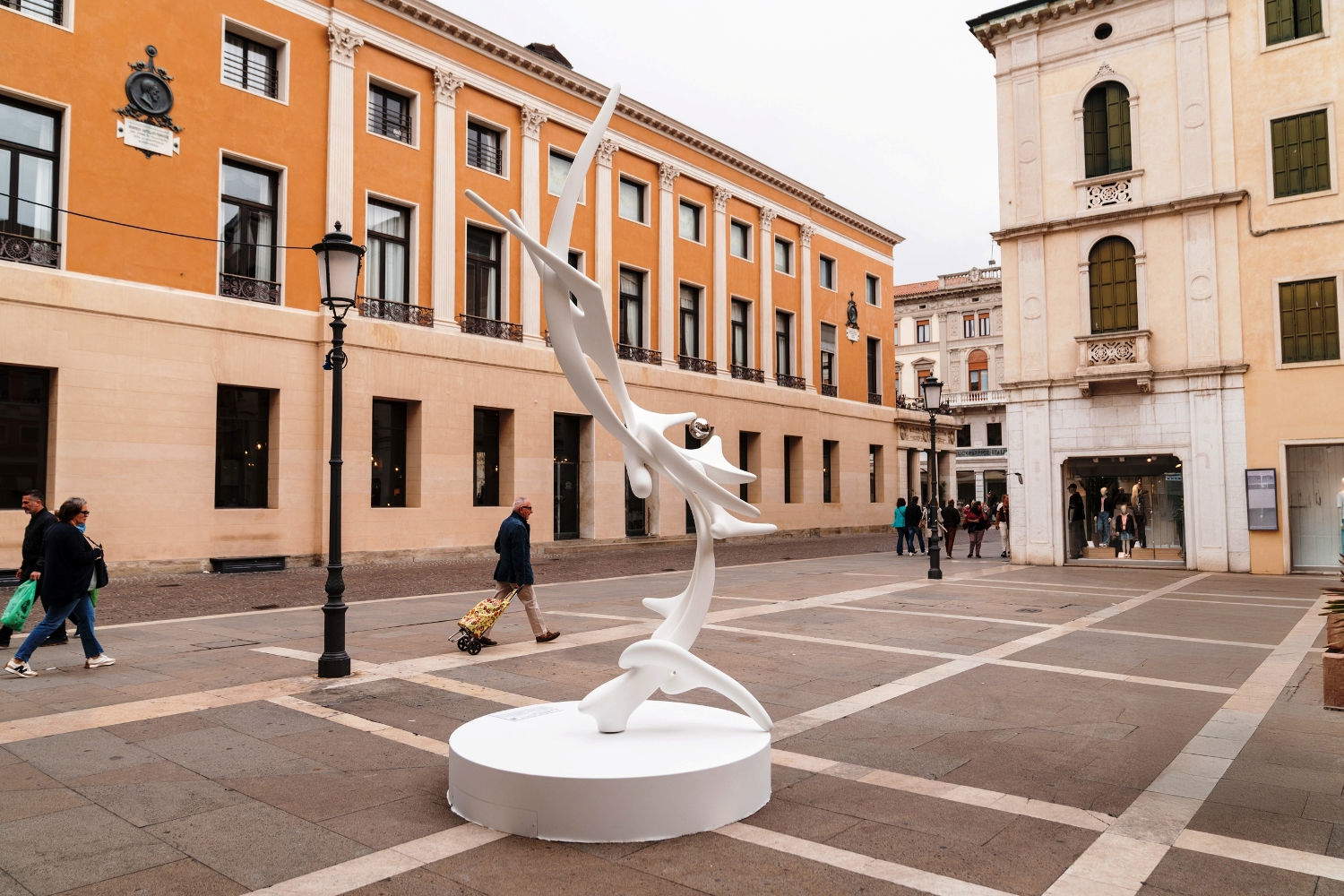
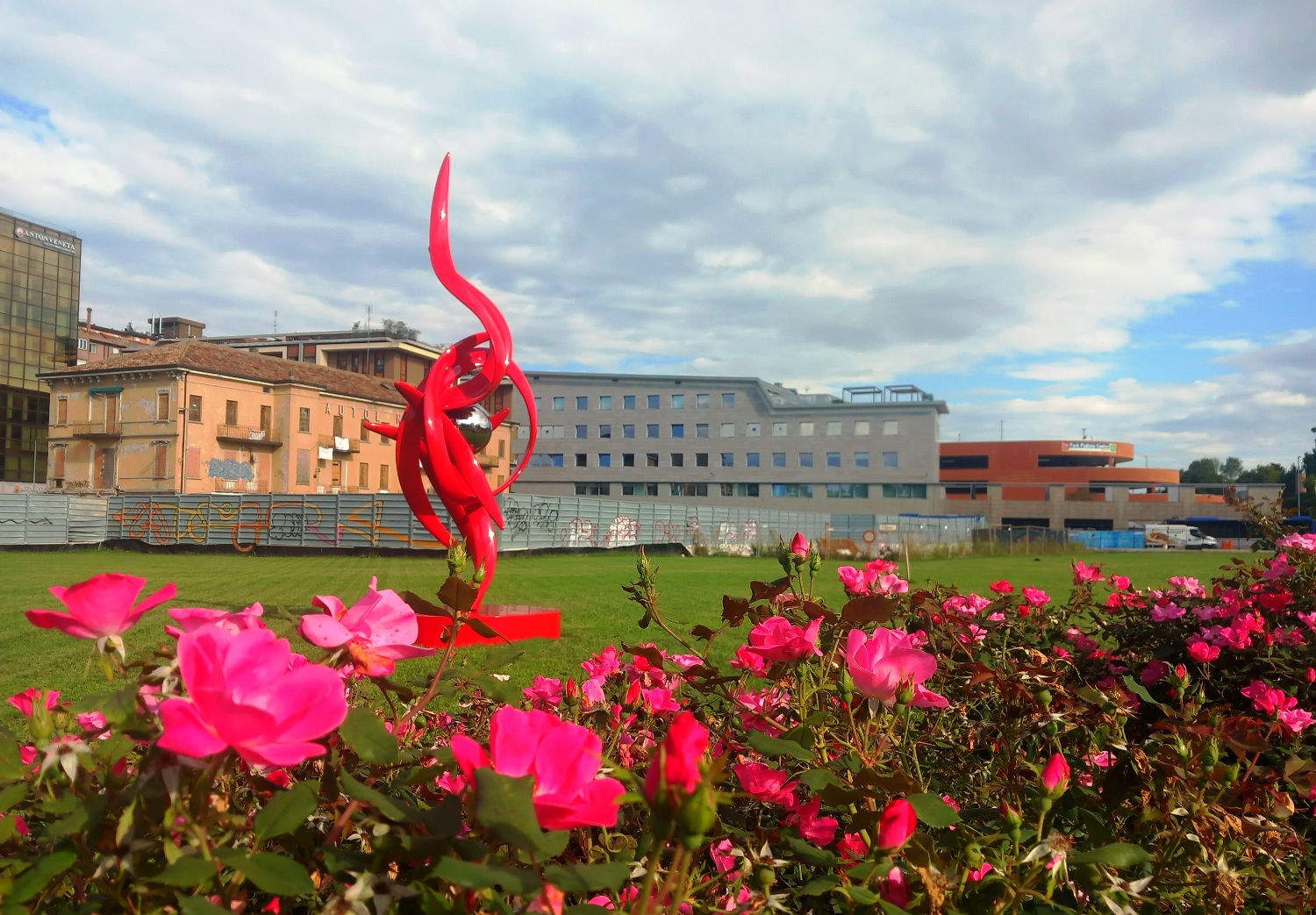
“The theme of the kiss holds a special place in the history of modern sculpture,” Jon Wood points out, "with internationally celebrated works by Auguste Rodin and Constantin Brancusi depicting human intimacy and closeness in different ways. Gianfranco Meggiato approaches this subject through the lens of Giotto’s famous fresco, The Kiss of Judas. Meggiato’s new work interprets this act of intimacy and betrayal in three dimensions, rethinking painting and plasticity in a new, essential and slender sculptural form. Plasticity is reactivated as the sculpture simplifies and essentializes the bodily forms of Giotto’s original composition, focusing on those dynamic points of contact, those sparks where energy is released between forms."
“Meggiato’s sculptures,” Nicola Galvan points out, “with their shifting and ascending forms, evoke the impermanence of what surrounds us and reveal its becoming over time. In what seems to have no substance, the artist seeks the traces of a thought of the Universe that binds and connects everything, establishing with the viewer a profound bond that leads him to look at reality and art itself through a transformed gaze.”
Alongside this installation, which is the centerpiece of the entire project, thirteen other works by Meggiato are integrated into the urban fabric. From the Castello Carrarese to the Listòn, from Piazza Eremitani to the Gardens of the Arena Romana, to Piazza Azzurri d’Italia, the sculptures fit into symbolic places and peripheral areas. Among the works on display, Lo Specchio dell’Assoluto, located in front of the Eremitani Museum, explores the theme of the relationship between man and the infinite. Fugitive Moment, located in the pedestrian area between Piazza Eremitani and Corso Garibaldi, invites reflection on the transience of existence.
Sfera Conchiglia, along the path leading to the Scrovegni Chapel, alludes to the inner dimension and purity of human essence. In the Gardens of the Roman Arena, Sfera Sirius directs the gaze toward the celestial vault and the beauty of the cosmos. In Galleria Cavour, Verso la Libertà opens sculptural forms beyond patterns, suggesting vital expansion. In the former Piazzale Boschetti area, Mistral stands out with its red volutes, a symbol of wind power and inner rebirth. Two works, The Quantum Man and Anima Latina, are placed in less central areas of the city, reflecting the desire to extend artistic reflection beyond monumental boundaries. The choice responds to the intent to bring sculpture to peripheral urban contexts as well.
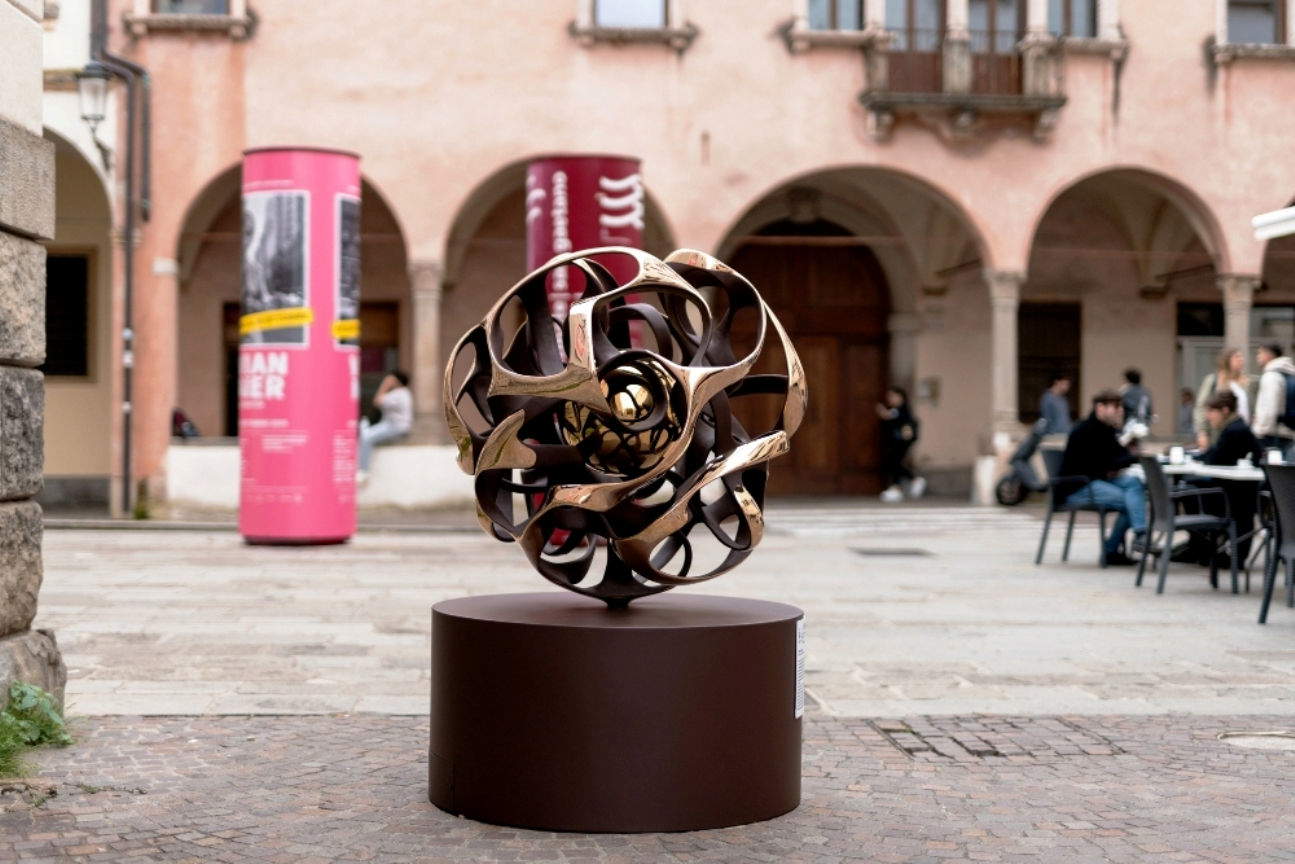
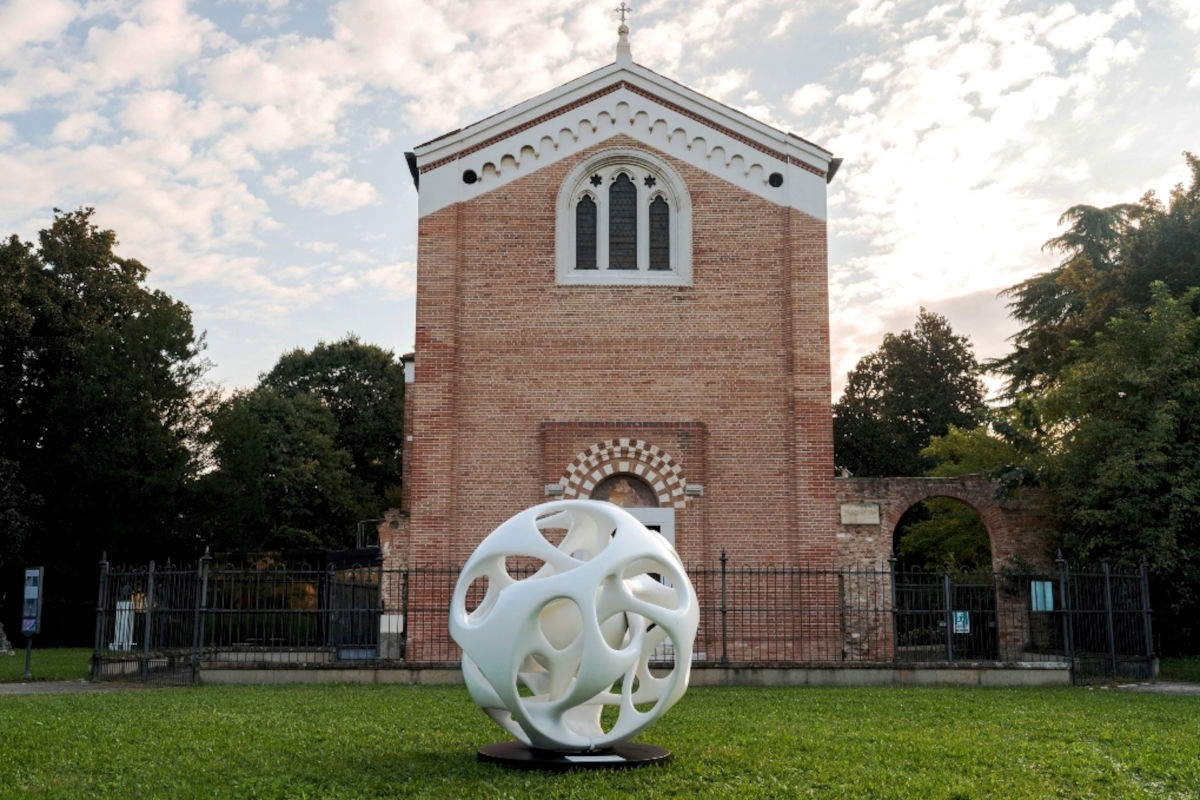
The works are made of bronze, through the lost-wax casting technique, and aluminum, through bracket casting. They reach up to six meters and sixty feet in height and stand on stainless steel bases. Each installation is accompanied by a QR code that allows the public to learn more about the meaning of the sculptures and follow the entire city itinerary via smartphone. Parallel to the exhibition, the Fundación de Arte y Cultura Gianfranco Meggiato has designed an illustrated children’s book, presented in libraries and museums in Padua. The initiative complements a program of educational activities with the aim of bringing new generations closer to art and aesthetic awareness. At the end of the exhibition, in 2026, the exhibition catalog will be published by Editoriale Giorgio Mondadori, with extensive photographic documentation and critical texts dedicated to the works and their relationship with the Italian plastic tradition.
Gianfranco Meggiato, a Venetian-born sculptor, has been active on the international scene since 1998. He has participated in exhibitions in Italy and abroad, in institutional settings and in events dedicated to contemporary sculpture. In 2017 he received the Icomos-UNESCO Prize “for masterfully combining the ancient and the contemporary.” His works have been presented in numerous European and non-European cities.
 |
| In Padua, Gianfranco Meggiato's widespread exhibition in dialogue with Giotto |
Warning: the translation into English of the original Italian article was created using automatic tools. We undertake to review all articles, but we do not guarantee the total absence of inaccuracies in the translation due to the program. You can find the original by clicking on the ITA button. If you find any mistake,please contact us.